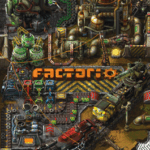Escape from Tarkov is a hardcore, ultra-detailed multiplayer first-person shooter developed by Battlestate Games. Set in the fictional Norvinsk region of northwestern Russia, the game places players in the midst of conflict between two private military companies: USEC and BEAR. Players engage in high-stakes raids where survival depends on tactical combat, resource management, and quick thinking. Known for its punishing mechanics and steep learning curve, Tarkov has become a benchmark for realism and depth in the extraction shooter genre. This article explores the game’s evolution, gameplay systems, recent developments, technical challenges, and its broader impact on the gaming community.
1. Origins and Early Access Launch
Escape from Tarkov entered closed beta in mid-2017 with the ambitious goal of creating a military simulation-style shooter focused on realistic weapon handling, ballistics, and inventory management. From the start, its depth and difficulty set it apart from other shooters. Players needed to master recoil patterns, injury treatment, and managing limited space in their inventory. Despite being in early access for many years, the game steadily built a loyal and passionate player base. By 2024, its peak concurrent players surpassed half a million during wipe events, showcasing sustained interest in the hardcore shooter experience it offers.
2. Gameplay Systems: Raids, Stash, Hideout, and Economy
In Tarkov, players enter raids either as private military company operatives or as Scavs—AI-controlled or player-controlled scavengers with more basic gear. The variety of maps includes Customs, Shoreline, Reserve, Lighthouse, Interchange, Factory, Woods, Streets of Tarkov, and Ground Zero. Success depends on surviving the raid, extracting safely, and gathering valuable loot while managing hydration, energy, and injuries. The game’s hideout system adds a meta-progression layer, allowing players to craft items, generate bonuses, and improve their chances in future raids. The player-driven flea market economy facilitates complex trading and investment strategies, further enriching the gameplay depth.
3. Realism, Ballistics, and User Interface Complexity
Escape from Tarkov is praised for its realistic bullet physics, including ricochets, overpenetration, and armor degradation. Players must pay attention to limb-specific injuries, applying bandages, splints, and tourniquets to survive. The looting system is methodical, requiring players to search containers item by item, heightening tension and immersion. Movement mechanics such as stance control and crouch height add strategic options for stealth or aggression. Audio plays a crucial role, with sound propagation affected by walls and environments, encouraging careful navigation. While the user interface is notoriously complex, this complexity enhances the tactical depth and rewards player mastery.
4. Mid-2024 Wipe, Engine Upgrade, and Major Patch
At the end of 2024, Tarkov underwent a major wipe alongside a significant update to version 0.16. This patch introduced a rework of the Customs map, winter weather effects, and new high-tier weapons like the RShG-2 rocket launcher. A prestige system was also added, allowing players to reset their progression for exclusive rewards, which revitalized the game’s competitive environment. The wipe equalized the playing field and reinforced the high-risk, high-reward nature that defines Tarkov’s core experience.
5. 2025 Roadmap: Towards Version 1.0
Battlestate Games laid out a detailed roadmap for 2025, aiming to bring Tarkov to a full 1.0 release between September and December. Incremental patches throughout the year focused on optimizing visuals, improving AI behavior, and fine-tuning existing maps. Notable updates improved audio occlusion, adjusted weapon balance, and enhanced player quality-of-life features such as inventory management and quest tracking. The final release is set to introduce the Terminal map and narrative-driven endgame quests, completing Tarkov’s long-awaited story arc and providing new long-term goals for players.
6. Technical Improvements and Bug Fixes
Throughout early 2025, developers worked to resolve over 200 bugs, improving stability and performance. Issues such as crashes, freezes, and glitches in animations were addressed. Audio improvements were particularly significant, enhancing the realism of environmental sounds and combat feedback. AI behaviors were refined, including better navigation and combat tactics. Quality-of-life enhancements, like improved stash search filters and quest pinning, helped streamline gameplay and reduce frustration.
7. Anti-Cheat Evolution and Community Reporting
The anti-cheat system in Tarkov underwent substantial upgrades in 2025. Moving beyond traditional signature-based detection, the developers implemented behavioral analysis powered by machine learning to detect suspicious activity in real time. This system allows immediate bans during or after raids for cheating behaviors such as impossible movement speeds or unnatural aiming. The community reporting system was also revamped, weighting reports based on the reputation of the player submitting them. While some privacy concerns were raised over kernel-level detection, transparency has improved with regular ban reports and an appeals process.
8. Performance, Stability, and Player Feedback
Despite these advances, Tarkov still faces challenges with performance and stability. Players report issues such as frame rate drops, memory leaks, crashes during raid loading, and persistent long loading times. These problems affect a variety of hardware configurations, including some high-end systems. Workarounds like clearing cache, adjusting graphics settings, or increasing virtual memory help some players but do not fully solve the issues. These challenges highlight the complexity of optimizing a deeply detailed and simulation-heavy game like Tarkov.
9. Community Sentiment, Mods, and Competitive Landscape
The community remains deeply engaged but divided. While many appreciate the unparalleled depth and realism Tarkov offers, others criticize the slow pace of development and ongoing technical problems. Modding communities, such as the popular single-player Tarkov mod, provide alternatives for those frustrated by performance issues or looking for offline experiences. Critics argue that the game’s beta status has extended too long without delivering a polished final product. Nevertheless, Tarkov remains a unique and influential title in the extraction shooter genre, continually pushing the boundaries of tactical multiplayer shooters.
































